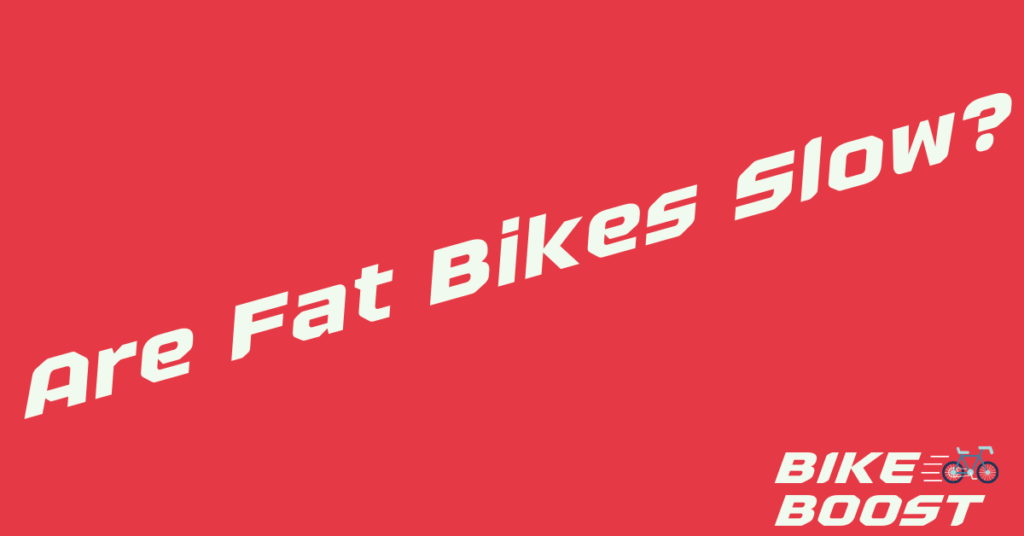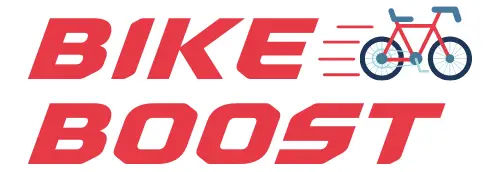If you’re a seasoned cyclist and used to riding road and time trial bikes, your first ride on a fat tire bike might feel a little sluggish. Getting used to a bike with different sized tires and a heavier frame might make you feel like it is a lot of hard work. But are fat bikes slow? In this guide, I will look into whether fat bikes really are slow.
For those in a hurry…
Fat bikes themselves are not slow, but they can feel slower than other bikes due to the extra weight and surface friction that the tires create. It also depends on the surface as well, as fat bikes are much faster on snow than any other bike. If you want to ride on the roads fast, you will need to work a bit harder than with other bikes and potentially make some modifications, which I will cover below.
Want to learn more? Then read on…

Why Do Fat Bikes Feel Slower?
Switching from a “traditional” bike to a fat bike can take a bit of adjustment, as fat bikes are quite different to other bikes that you can ride.
Generally, a fat bike will feel slower for one (or more of the following) reasons:
Tires
The tires on your bike are one of the biggest factors that can make you feel much slower when riding your bike as the rolling resistance from your tire plays an important role in slowing you down.
There are three particular factors about fat bikes that tend to be the main elements in making your bike feel slower:
- Tire width – Fit tire bike = fat tires! By riding with fatter than normal tires, you are increasing the amount of tire in contact with the surface and increasing the rolling resistance of the bike.
- Tire pressure – When riding a fat bike, you tend to use lower tire pressures as this helps when riding across loose surfaces like snow and sand. This lower tire pressure increases the surface area in contact with the road and therefore the rolling resistance.
- Tire tread – Typically fat bikes are designed for use offroad, where low traction is expected and therefore knobbly tires are used. The increased depth of the tread and uneven surface effectively slow you down as you don’t get an even roll across the surface (particularly smoother surfaces).
Increased Drag/Wind Resistance
The other major factor that can make your bike feel a little sluggish is the amount of drag when you are riding.
This is the same as wind resistance and is related to the size of the objects that you are trying to “push” through the air as you travel. The more that an object resists the wind, either by size or not having a sleek (aerodynamic) shape, the higher the resistance the wind causes, meaning increased drag.
For fat bikes, there are a couple of factors that increase drag/wind resistance:
- Bike size/shape – Wider tires on your fat bike are not the only things that is larger than on other types of bikes, as the forks are also wider apart. This increases the overall width of your bike, making the size of the area you want to push through the air larger.
- Riding position – Typically on a fat bike, you will be sitting in a fairly upright position, especially when compared to road and time trial bikes. This again means that you are increasing the surface area you want to move through the air and making you less aerodynamic as a result.
Weight
When it comes to cycling there is a simple rule, the heavier the bike, the slower the bike!
The reason that heavier bikes tend to be slower is largely down to simple physics, with gravity making it harder when climbing hills. Essentially whilst you are trying to ride up the hill, gravity is trying to pull you back down and the heavier you and your bike are, the more you will be affected by gravity.
You will therefore feel slower because you have to work harder to power your bike up the hill.
Gears Ratio
Sometimes the reason that your bike will feel slower is simply that you don’t have the number of gears you need to ride faster.
Having smaller gears on the front and larger ones on the back will mean that you simply don’t allow yourself to get up to high speeds on your bike and this is quite typical of fat bikes, which are not necessarily designed for reaching really fast speeds.
This gearing is useful when it comes to climbing hills though, as you will be able to drop down gears and spin your way up to the top without feeling like you are wading through molasses.
How Can I Make My Fat Bike Faster?
If you’re concerned that with a fat bike you are condemned to a life of feeling sluggish when you ride then fear not, there are some simple changes you can make to your fat bike that will make you feel and go faster.
Change Your Tires
To help reduce the rolling resistance of your bike, moving to slicker tires will help you speed up when riding on flat surfaces, such as the road or pavement. We cover more about this in our guide Can You Ride Fat Bikes On The Road.
Of course, fat bikes are not just used for riding on the roads and pavements, there is also the really fun part of fat bikes, which is riding off-road and in the snow. If this is going to be your primary riding surface for your fat bike, getting tires that are suited to the conditions will help speed you up, as you will get a lot more grip in the conditions and the bike will slip around less.
If you are especially keep to rise your bike in the snow, you should get tires with studs in them, as this helps to increase the grip even more of your tires. Check out our guide to the Best Fat Bike Studded Tires, to find the perfect set for your fat tire bike.
Adjust Your Tire Pressure
The next thing you can do is get your tire pressure correct, as this also impacts the rolling resistance when riding.
For smoother surfaces, having a higher pressure (PSI) in your tires will reduce the amount of rubber in contact with the road. This will reduce your rolling resistance and therefore help you to ride faster, easier.
When riding on soft or rocky surfaces, lower pressure in your tires can be a real boon.
The extra surface area you get from a lower tire pressure helps to spread your weight and therefore help to ride on top of the snow/ sand rather than having to cut through it.
For rocky surfaces, the lower the pressure the more your tire will deform when bumping into rocks, which will help to avoid punctures caused by excessive pressure on your tires.
To get your tire pressures right, you will need a good pump with a pressure gauge. Check out our guide to the Best Pumps For Fat Bikes to find a pump that will help you get the right pressure in your tire.
Lighter Components
As discussed earlier, heavier bikes tend to be slower. To make your fat bike feel faster, you can start switching to lighter components.
Wheels are the biggest area where you can save weight as, after the frame, these tend to be the next heaviest item on the bike. Getting a lighter set, compared to the stock set you get with the bike, will make you feel faster.
You can also look to save weight in other areas, such as your saddle, pedals, handlebars, etc. In reality, these will make little difference overall, so unless you are trying to shave off weight for some marginal gains, I would choose these components based on comfort and durability, rather than weight.
If you are interested in switching out your components, check out our guides below where you will find guides specifically for fat bikes.
Best Saddles for Your Fat Tire Bike.
Summary
So what do you think? Are fat bikes slow? In my opinion, they can be slow in some situations, but in others, they are actually much faster.
If you’re looking for a bike that will get you from A to B as fast as possible on roads and pavements, a fat bike probably isn’t the answer. If you want a bike that you can ride fast one through forests, snow and sand, then a fat bike is definitely not slow. Check out our guide to the best fat tire bikes under $2000, where we have picked some of the best affordable fat bikes that you can buy today.
Andy is an avid cyclist who enjoys nothing more than a ride out in the hills. Competing in track, road, time trial and mountain bike events in the past, he prefers slower rides out with his family these days.
